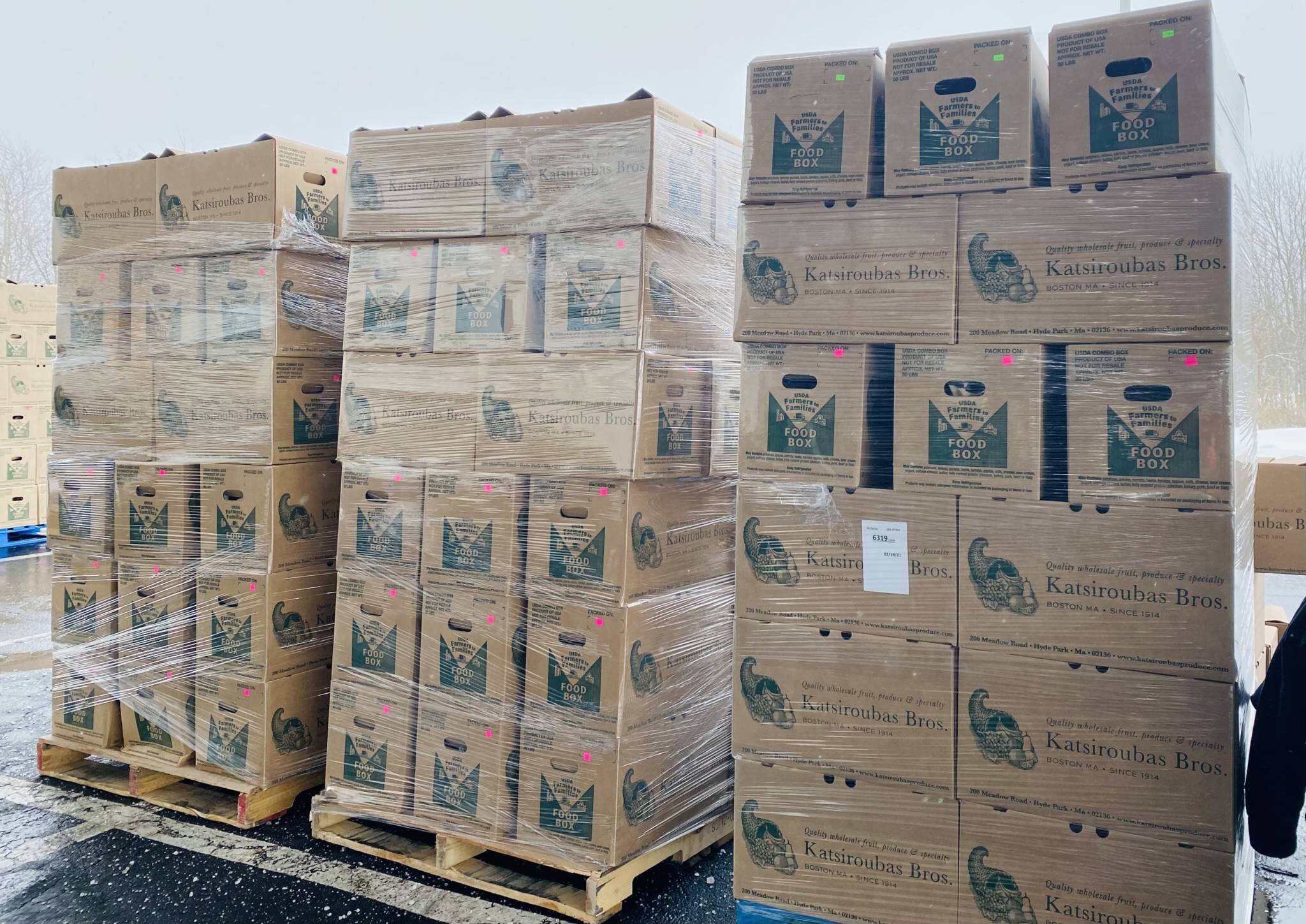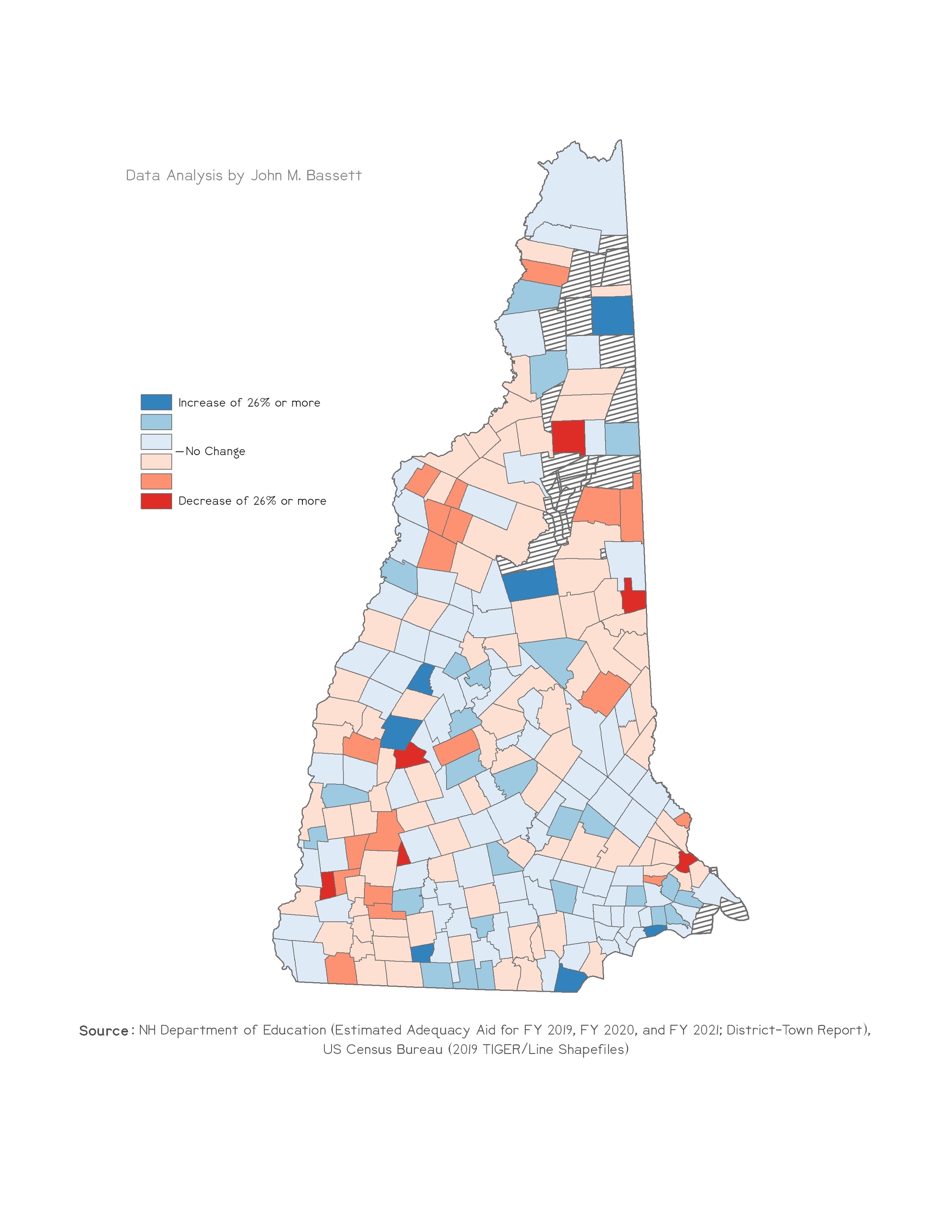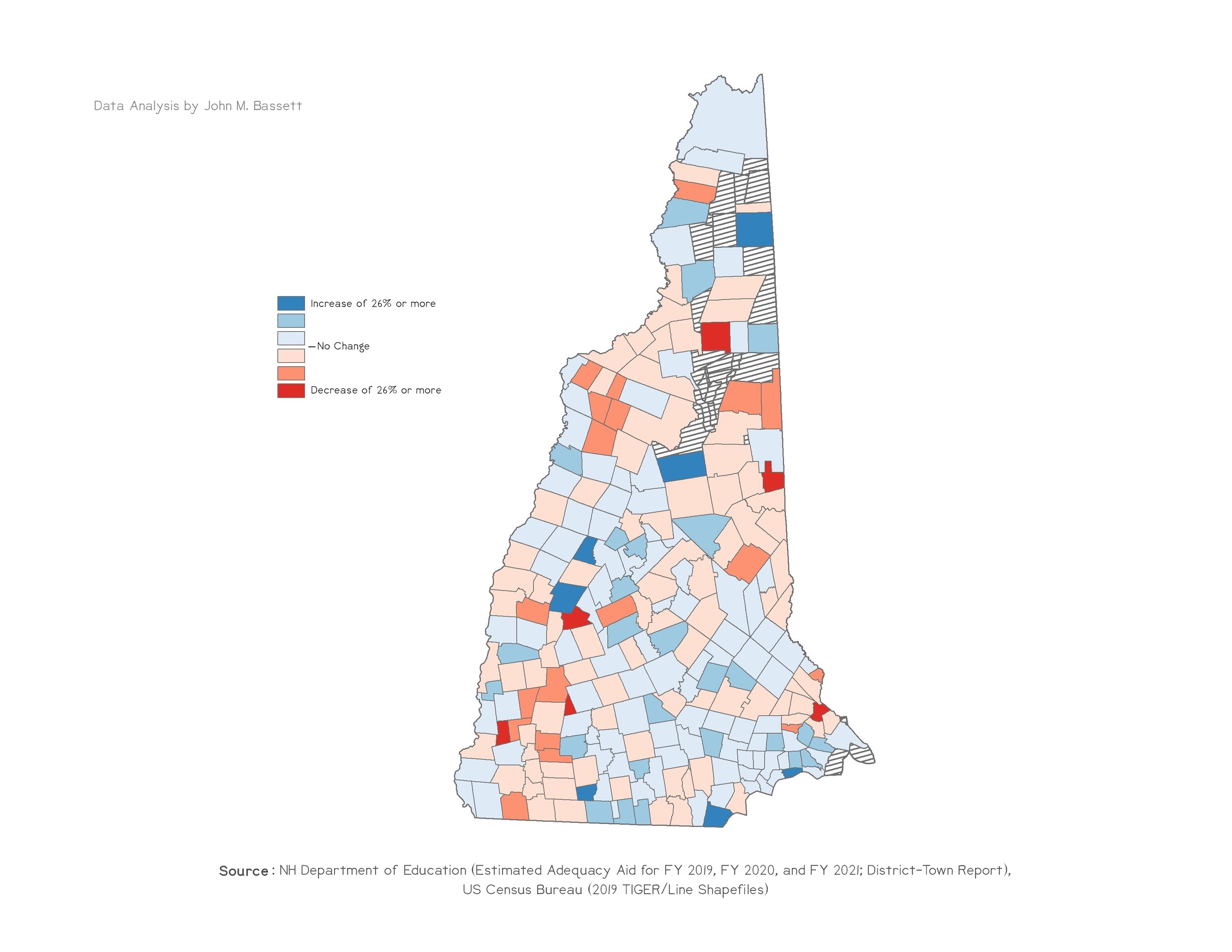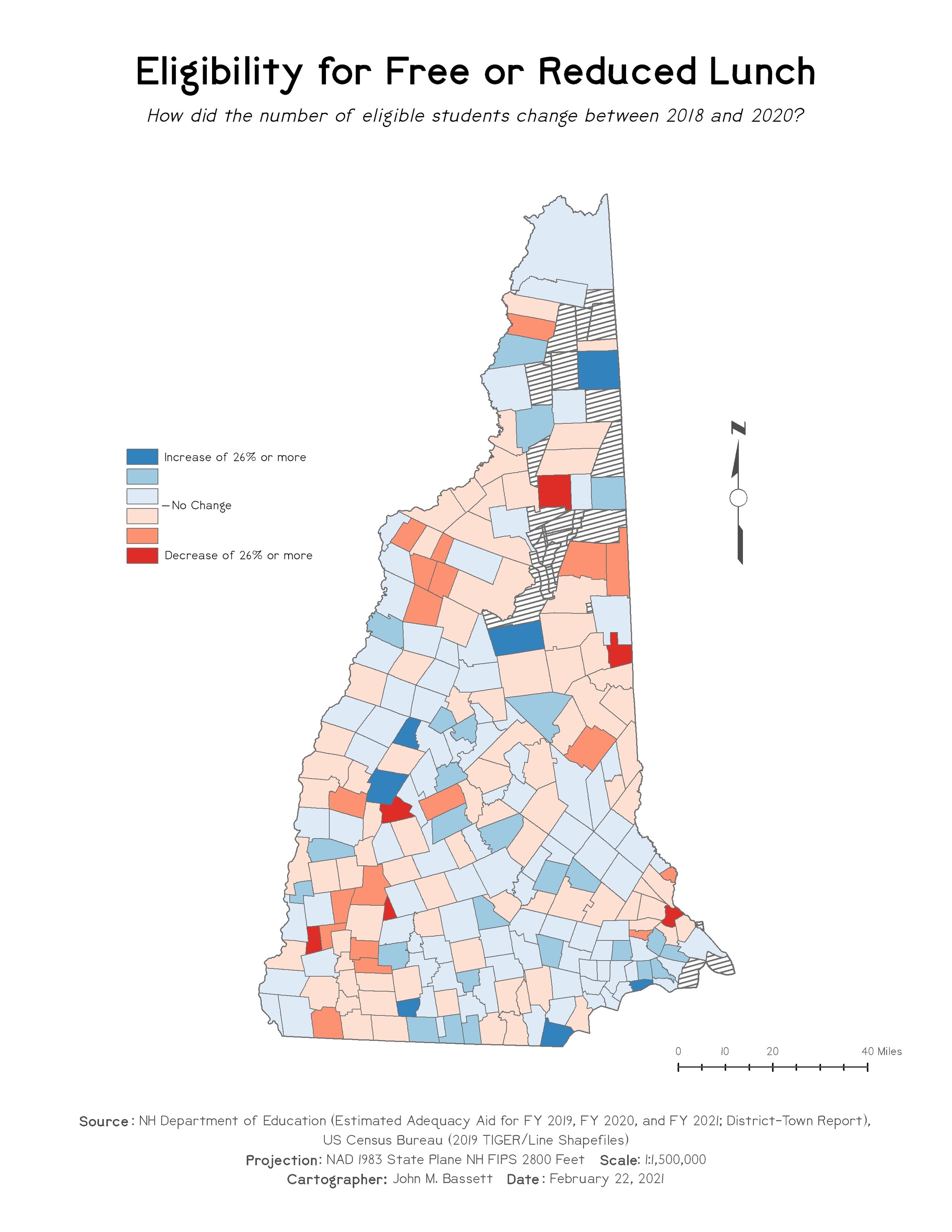Stigma, lack of awareness may be keeping people from accessing services.
By Evan Edmonds
Granite State News Collaborative
NH Food Bank transport truck. Photo/Pat Grossmith
In January, more than one in four Granite Staters reported that it was at least somewhat more difficult than usual to pay for typical household expenses, including food. And yet, New Hampshire ranks among the lowest in the nation for people making use of food assistance programs.
This data compiled in a February 8 report from the New Hampshire Fiscal Policy Institute (NHFPI) explains the struggle to put food on the table continues to be exacerbated by the COVID-19 pandemic. Low-income families already tend to have higher levels of food insecurity before taking into account the struggles of COVID-19. Nutritional Aid Programs like SNAP (Supplemental Nutrition Assistance Program - Food Stamps in New Hampshire) are available for families who need it, but lack of awareness of these programs and a stigma surrounding food insecurity interfere with families accessing support: “Stigma is a huge enemy, and it’s unnecessary,” said Eileen Liponis, Executive Director of the New Hampshire Food Bank.
Want to learn more? Watch Eileen Liponis, Executive Director of the NH Food Bank as well as Jennifer Gillis and Jim Connors, from the Manchester School District, discuss food insecurity on NH PBS’ The State We’re In.
Food Insecurity in New Hampshire
Liponis, said there was a 24% increase in food they distributed in 2020, and a “huge increase,” in the amount of mobile food pantries - up to 71 from ten - serving “just under 30,000 families.”
Liponis said that their agencies are seeing more families than ever before, and that unemployment is the main contributor. Losing jobs due to the pandemic is causing more people and families to move in together, increasing the number of mouths to feed per household.
New Hampshire’s unemployment rates rose higher than the national average in 2020. New Hampshire unemployment has been highest among industries with low wages - such as the Food Service Industry - and according to Opportunity Insights’ Recovery Tracker, unemployment rates remain significantly higher than normal for low wage workers in New Hampshire, while higher wage industries have seen their unemployment rates return to nearly pre-pandemic numbers.
Direct aid programs like SNAP shouldn’t just be considered as a safety net, but also as a program that stimulates the economy, according to Michael Polizzotti, policy analyst for NHFPI. The money given to families in need goes right back into their respective communities, as they typically spend it right away in their own local grocery stores. Moody Analytics found that in 2009 during the Great Recession that for every dollar spent from SNAP, approximately $1.74 of economic activity was generated.
A pallet of boxes ready for distribution at the Comcast parking lot in Manchester. Photo/Pat Grossmith
Awareness and Stigma:
Despite the need, data shows that New Hampshire’s participation in several of these Nutritional Aid Programs is lower than most other states according to New Hampshire Hunger Solutions.
Laura Milliken of New Hampshire Hunger Solutions, an organization that advocates for the improvement of food security of vulnerable New Hampshire families, said that the SNAP program saw an increased participation at the start of the pandemic, but decreased in June (2020). While it’s hard to tell exactly why participation in these programs has been low, she said her theory is that people who initially applied for SNAP benefits may have become ineligible when they received increased benefits from COVID-19 relief. When those benefits eventually decreased in the summer months, they may not have known that they could reapply for SNAP.
Milliken said those impacted by the pandemic may be those who never expected to need those programs - they may still not know they’re eligible or think that they aren’t in need of help. The administrative barriers could be a disincentive as well, she said: “when people’s lives are as chaotic as the pandemic has made them, any administrative burden is hard to do.”
Volunteers load the back of an SUV with boxes of food Friday in Manchester at the state’s largest mobile food pantry. More than a hundred cars lined up before 11 a.m. to get the provisions provided by the New Hampshire Food Bank. Photo/Pat Grossmith
Liponis said NH’s population could take more advantage of SNAP, and that there’s an unrepresented population that could benefit from it. The Food Bank has a hotline for those who are looking to apply, she said. “The eligibility requirements have changed due to COVID, and so it’s most likely that you should give it a shot if you could apply and you could benefit from Food Stamps.” New Hampshire residents can apply for SNAP here and view eligibility requirements here.
States set their own parameters and eligibility requirements for Nutritional Aid Programs like SNAP. New Hampshire is one of the few states that didn’t waive the interview process for SNAP during the pandemic, while other states have. New Hampshire has instead offered the option to do the interview online rather than in-person.
In addition to administrative barriers, the stigma surrounding food insecurity is often a hurdle for families as well. “We are in an unprecedented pandemic that has put stresses on our economy and society that haven’t been seen in a century,” Liponis said. “You cannot have pride during a time like this when it is of no fault of your own that you were put in the position where you need help.
The NH Food Bank identifies areas of need by taking simple information, like where families are from and how many mouths they are feeding, but doesn’t require any sort of paperwork. “They are all welcome with dignity and respect,” she said.
Schools have played a big role in helping those touched by food insecurity as well: “schools are bending over backwards trying to get meals to students in need,” Milliken said. “The free and reduced lunch program provides crucial nutrition to roughly 27% of New Hampshire children - and that’s a pre pandemic number.”
During the start of the pandemic, the USDA offered the opportunity to have all students participate in free meals. In New Hampshire, schools are delivering meals on bus routes, using pickups during the week and districts are partnering with other community organizations to send food home on the weekends.
Jennifer Gillis, Assistant Superintendent of Operations in Manchester, the largest school district in New Hampshire, said they have made good use of waivers from the state of New Hampshire, allowing them to feed more students. She said they wanted to make sure they weren’t just helping families who needed assistance in the past, but also reaching out to everyone.
Contents of food boxes distributed by the NH Food Bank to families in need on Feb. 19, 2021. Photo/Pat Grossmith
Food Service Director of the Manchester School District Jim Connors said they are providing breakfast and lunch to students who are attending in-person, and on Monday, Wednesday and Friday, families can pick up two days worth of meals. “Right now roughly anywhere from 1,200 to 2,000 meals,” are served in a day, he said.
Gillis said the help of Connors and his team, Manchester Transit Authority and a “number of community partners and volunteers,” in providing meals for families with school aged children has been “an absolute highlight,” for Manchester. One of their teams, she said, has raised almost $780,000: “I think that energy, that effort really goes to showcase the power of community in Manchester,” she said.
Gillis said they’ve also seen some families who received food, come back and offer their help in return.
“We saw families who may not have otherwise needed that type of service or support in the past recognize that we were there without question or judgment, and they wanted to give back very much the same way that it had helped them,” she said.
To check eligibility for SNAP, visit the New Hampshire Department of Health and Human Services and to learn more about SNAP visit their website. More info about upcoming mobile food pantries and where to find them can be located at nhfoodbank.org.
These articles are being shared by partners in The Granite State News Collaborative. For more information visit collaborativenh.org.
In the first 15 minutes the Mobile Food Pantry was opened Friday in the parking lot of Comcast on East Industrial Drive in Manchester, volunteers had loaded boxes of food into dozens of cars, many of the drivers picking up provisions for two or three families. Photo/Pat Grossmith








